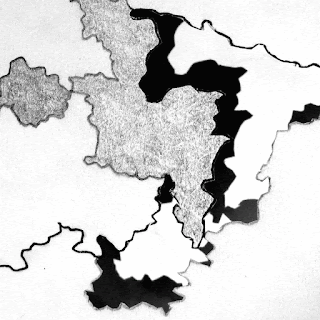Great Western Embroiderers, the group I stitch with, generally has a group project on the go in which I try to participate. So, from time to time, I find myself producing work which is very different both in technique and in focus from the main work I'm doing at the time.
Now is one of those times.
The choice was made by the group to produce a series of
Sinchies (the stitched version, not the Aussie food pouches for children!), one every two months. My offering for this first round today (yet to be finished off, I admit) is shown above. The plan is that these will eventually be joined together in strips to make a larger whole.
Two months ago, two colours were drawn out of a hat and we were asked to produce a small piece 6 ins by 6 ins (hence the name) in whatever style took our fancy. This time the random colours were pink and green and to start us off, we were provided with a small pack of fabric, threads and beads in these colours to use and to which we could add from our own stash.
I added among other things strips of silk sari fabric, together with spun sari offcuts and fibres. I chose to put all these fabrics under the embellisher (needle felting machine) and then to hand stitch over the top. Inevitably, the piece ended up as a landscape as such impromptu pieces generally do. It is my default response when I haven't done any preliminary sketchbook work.
This sort of exercise tends to take me strangely out of my comfort zone as it is usually so different from what I am doing at the time, but it's good for me to think about other things and to work in a different way - to a formula and within boundaries, rather than freely and to my own agenda.
Right now, this formula inevitably involves the use of colour ... so definitely different and therefore probably most beneficial!

















